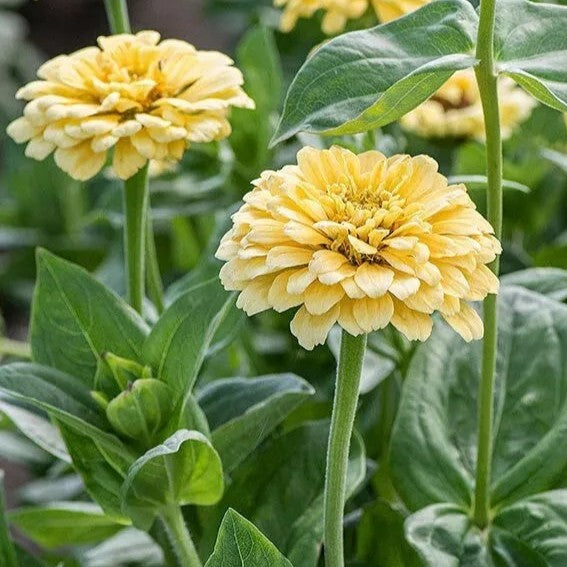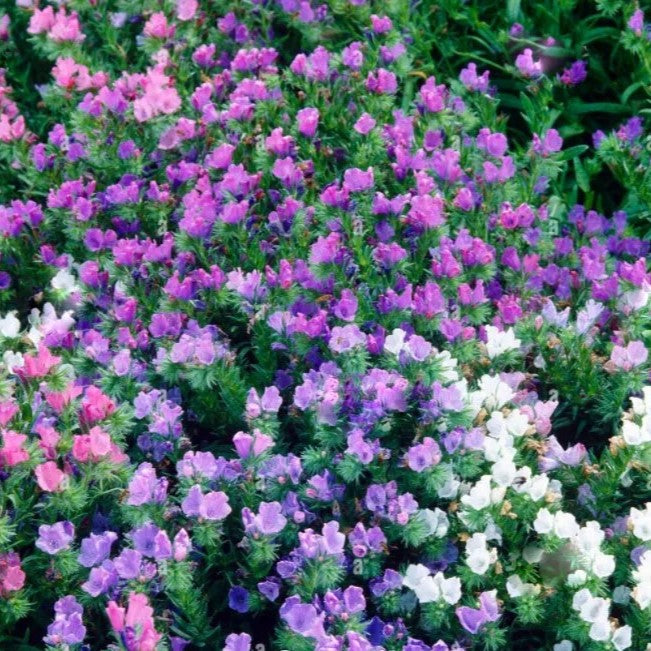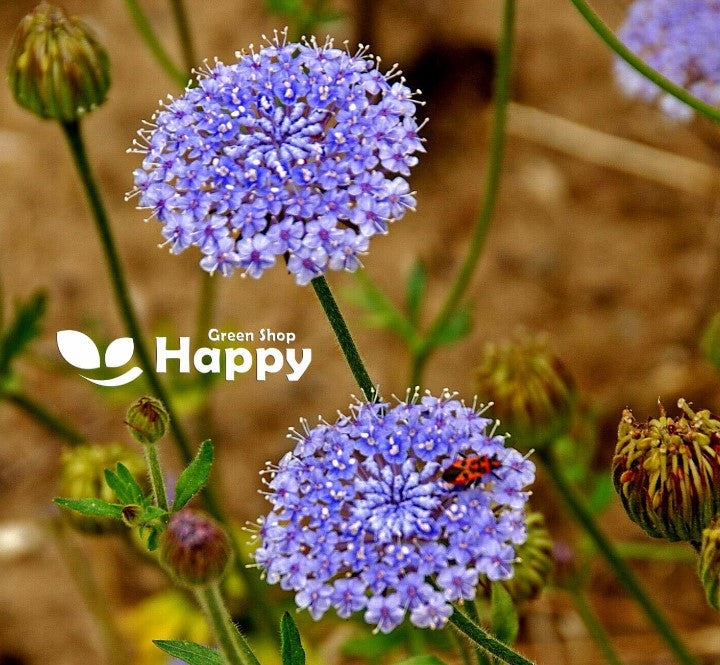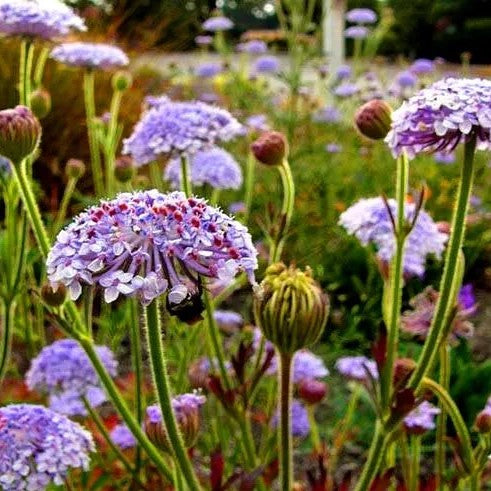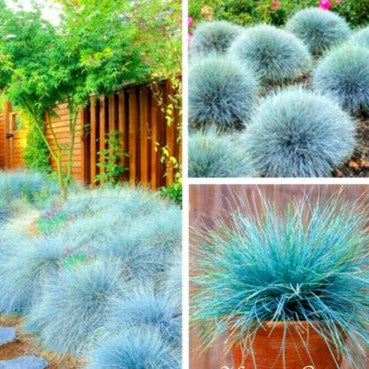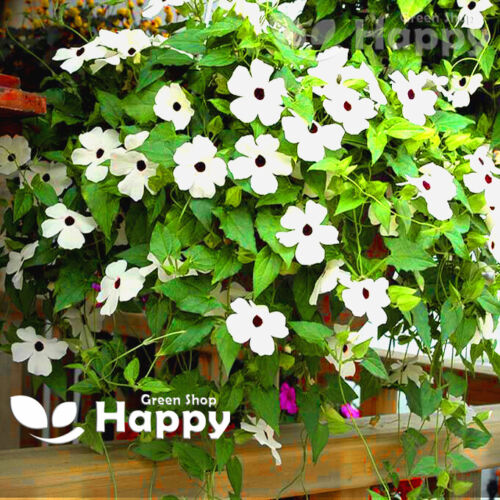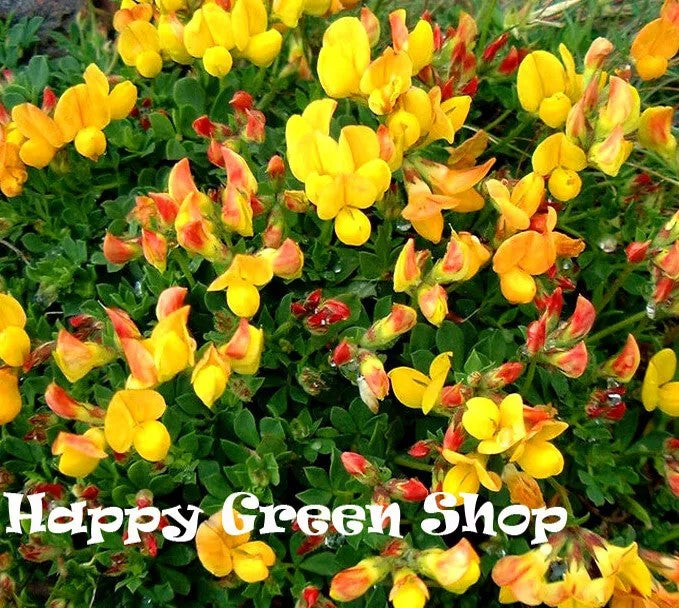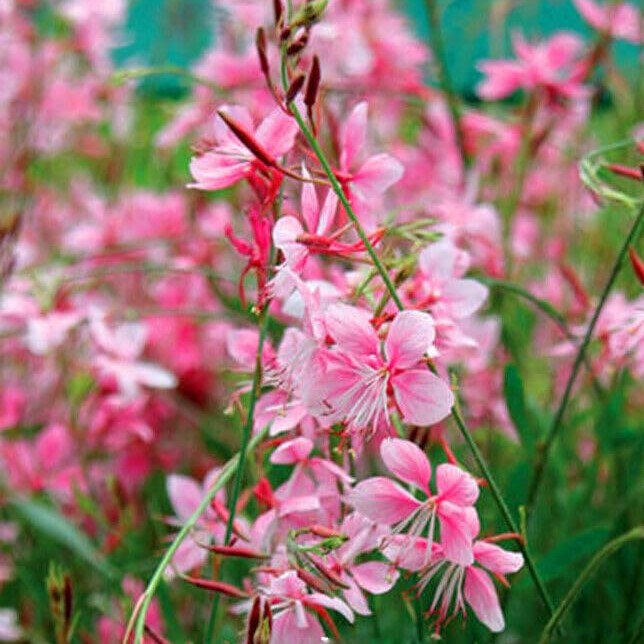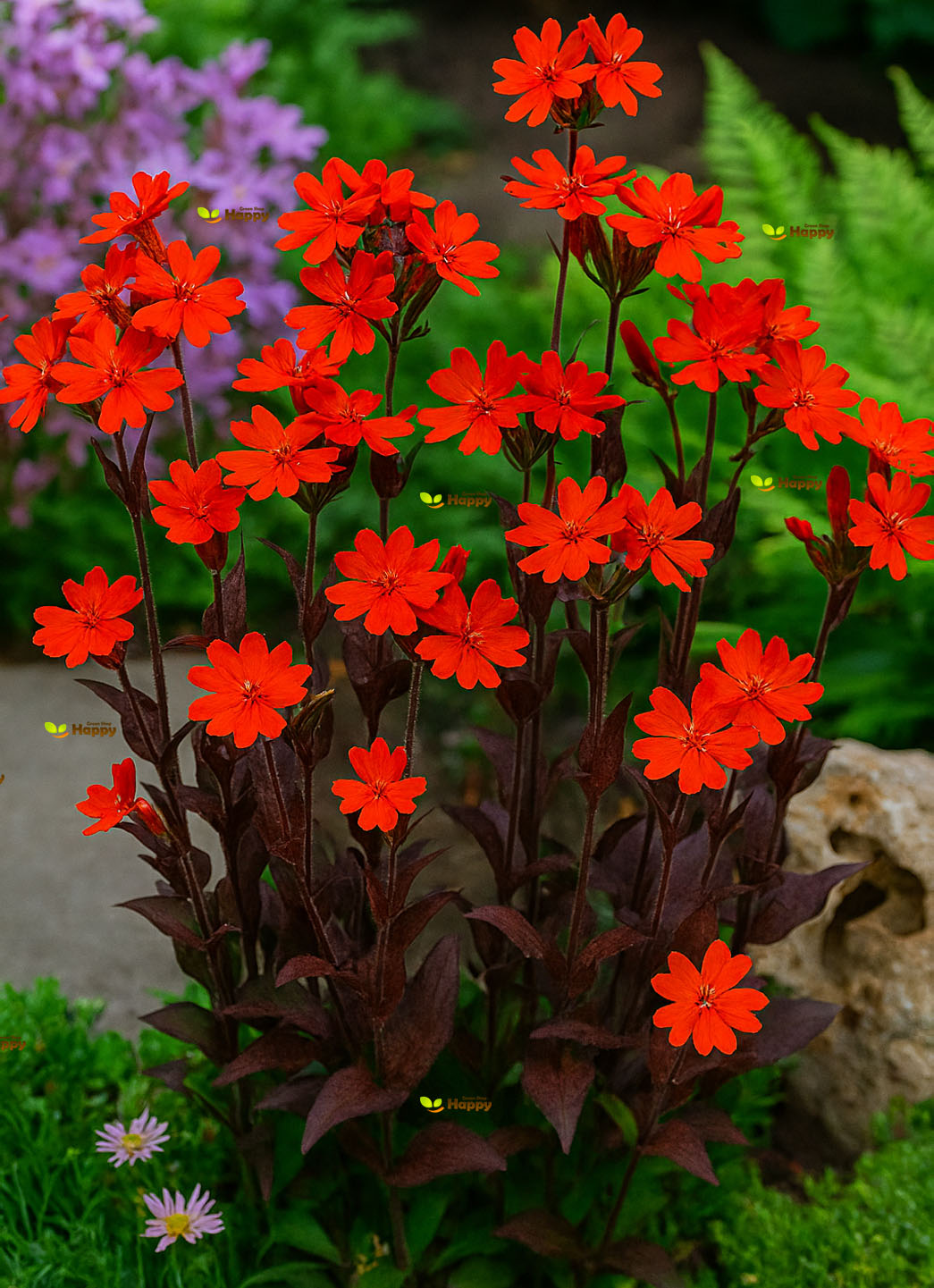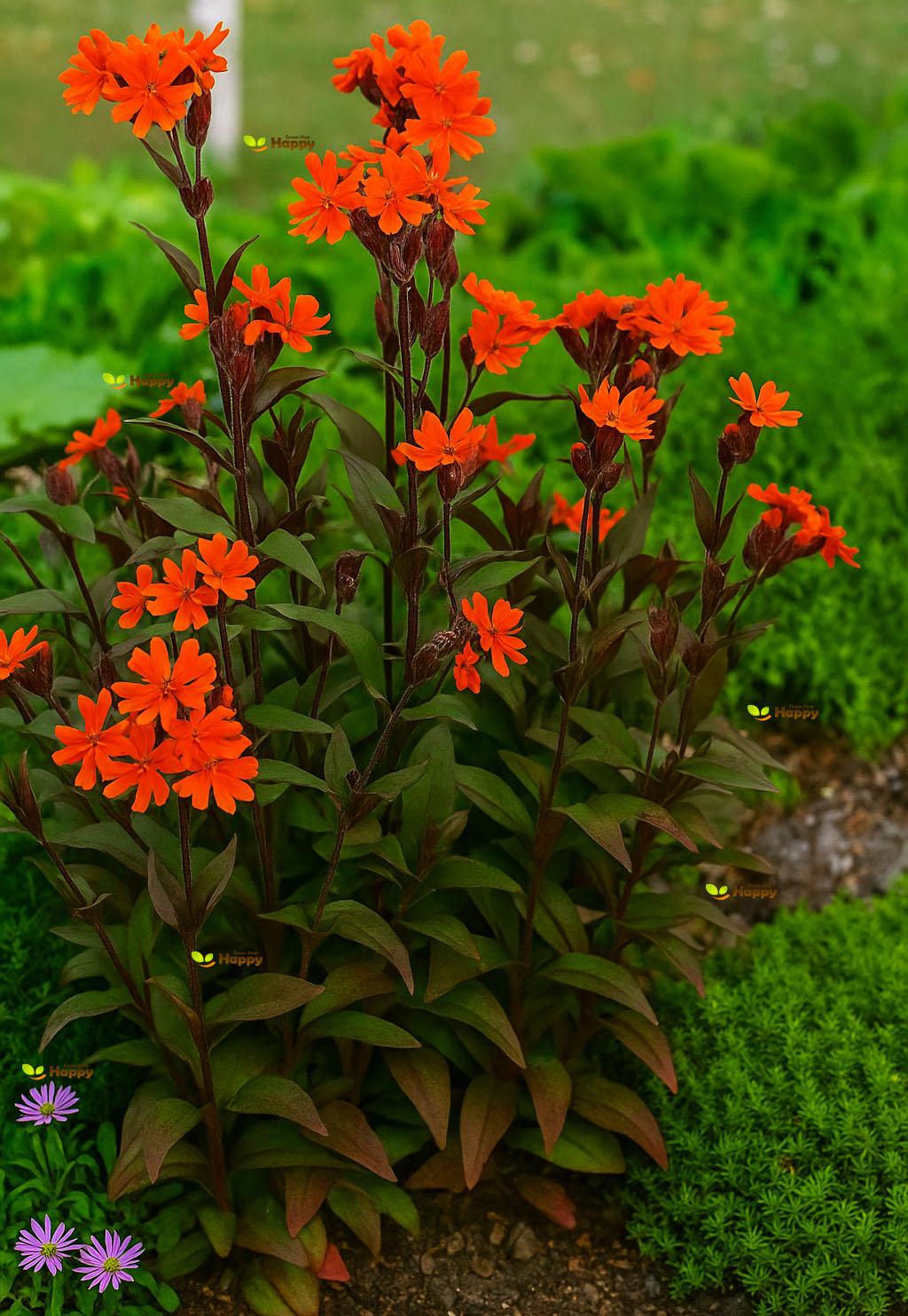Sort by:
180 products
180 products
Blueweed Flower Mix Seeds (Echium plantagineum)
The Blueweed Flower Mix is a vibrant and easy-to-grow annual that produces a spectacular display of blue, pink, violet, and purple trumpet-shaped blooms. Also known as Paterson’s Curse, this wildflower is prized for its striking colors and its ability to attract bees, butterflies, and other pollinators throughout summer. Perfect for naturalistic planting, wildflower meadows, or borders, this hardy mix thrives in poor soils and sunny sites, offering months of color with minimal care.
What Makes It Special
-
Long-lasting multi-colored floral display
-
Excellent for wildlife-friendly gardens
-
Thrives in dry, poor soils where other flowers may struggle
-
Perfect choice for naturalistic meadows and pollinator habitats
Key Features
-
Botanical name: Echium plantagineum
-
Common name: Blueweed / Paterson’s Curse
-
Seed count: Approx. seeds per pack
-
Height/Spread: 30–80 cm tall, 20–40 cm spread
-
Position: Full sun; well-drained sandy or gravelly soil
-
Flowering period: June–September
Ideal For
-
Wildflower meadows
-
Pollinator-friendly planting
-
Cottage gardens
-
Low-maintenance beds and borders
-
Naturalizing in sunny, dry spots
Sowing Instructions
-
When to sow: March–May outdoors or September for earlier blooms next year
-
How to sow:
-
Sow seeds directly where they are to flower, in well-prepared soil
-
Lightly rake in and firm down
-
Keep soil moist until germination (7–14 days)
-
-
Spacing: Thin seedlings to 20–30 cm apart
-
Care: Once established, requires very little maintenance. Tolerant of drought. Deadhead to prolong flowering.
Blue Lace Flower Seeds (Didiscus caeruleus / Trachymene caerulea)
The Blue Lace Flower is an elegant and delicate annual, much loved for its airy umbels of soft sky-blue blossoms. Each flower head resembles lacework, carried on long slender stems, making it ideal for cutting. With its light, lacy texture, this plant brings charm and movement to borders, cottage gardens, and wildflower-style plantings. It is also a superb choice for floral arrangements, both fresh and dried.
What Makes It Special
-
Produces lace-like umbels of pastel blue blooms
-
Excellent cut flower with a long vase life
-
Attractive to bees, butterflies, and pollinators
-
Adds a soft, romantic touch to borders and bouquets
Key Features
-
Botanical name: Didiscus caeruleus / Trachymene caerulea
-
Common name: Blue Lace Flower
-
Seed count: Approx. seeds per pack
-
Height/Spread: 45–60 cm tall, 20–30 cm spread
-
Position: Full sun, well-drained soil
-
Flowering period: Summer to early autumn
-
Lifespan: Half-hardy annual
Ideal For
-
Cottage gardens
-
Wildflower meadows
-
Borders and mixed beds
-
Cut flower and dried arrangements
-
Pollinator-friendly gardens
Sowing Instructions
-
When to sow: March–May indoors, or April–June outdoors after frost has passed
-
How to sow:
-
Sow seeds thinly in trays with seed compost or directly outdoors in fine soil
-
Lightly cover seeds with a thin layer of soil or vermiculite
-
Keep moist until seedlings appear (14–21 days)
-
-
Transplant/Thin: Space plants 20–30 cm apart
-
Care: Deadhead to prolong flowering; provide support in windy sites
Blue Fescue Grass Seeds (Festuca glauca)
Blue Fescue is a compact, clump-forming ornamental grass prized for its striking silvery-blue foliage and neat rounded habit. It provides year-round interest and a beautiful contrast to flowering plants, rock gardens, or modern landscapes. Easy to grow and low-maintenance, this grass is a top choice for adding texture and color to gardens.
What Makes It Special
-
Stunning steel-blue foliage that keeps its color year-round
-
Compact, tufted shape – perfect for edging or groundcover
-
Extremely hardy and drought-tolerant once established
-
Low-maintenance and versatile in garden design
Key Features
-
Botanical name: Festuca glauca
-
Common name: Blue Fescue
-
Seed count: Approx. seeds per pack
-
Height/Spread: 20–30 cm tall, 25–30 cm spread
-
Position: Full sun; well-drained soil (thrives in poor, dry soils)
-
Flowering period: Summer (produces delicate flower spikes)
-
Lifespan: Hardy perennial
Ideal For
-
Rock gardens and alpine displays
-
Borders and edging along paths
-
Containers and modern minimalist gardens
-
Drought-tolerant or low-maintenance landscapes
-
Adding color contrast to mixed plantings
Sowing Instructions
-
When to sow: February–April indoors or May–June outdoors
-
How to sow:
-
Sow thinly on the surface of moist, well-draining compost
-
Press seeds lightly into the soil, do not cover deeply (light aids germination)
-
Keep at 15–20°C; germination in 14–28 days
-
-
Transplant: When seedlings are large enough, prick out and grow in pots before planting out
-
Planting out: Choose a sunny spot with free-draining soil; avoid overly wet conditions
-
Care: Minimal maintenance required. Cut back old leaves in early spring to encourage fresh growth.
Black-Eyed Susan White Seeds (Thunbergia alata)
Black-Eyed Susan White is a vigorous, climbing annual producing striking white flowers with contrasting dark centers. Its trailing and twining habit makes it perfect for trellises, fences, arbors, and containers. Loved for its long flowering season and fast growth, it adds vertical interest and bright, cheerful color to any garden.
What Makes It Special
-
Bright white flowers with contrasting dark centers
-
Vigorous climbing and trailing growth ideal for vertical displays
-
Long-flowering, providing summer and autumn color
-
Attracts pollinators such as bees and butterflies
Key Features
-
Botanical name: Thunbergia alata
-
Variety: White
-
Seed count: Approx. seeds per pack
-
Height/Spread: Climbs 1.5–2.5 m; spread depends on support
-
Position: Full sun to partial shade; fertile, well-drained soil
-
Flowering period: June–October
Ideal For
-
Trellises, fences, arches, and arbors
-
Hanging baskets and containers with support
-
Vertical interest in garden beds and borders
-
Pollinator-friendly gardens
Sowing Instructions
-
When to sow: February–April indoors; March–May outdoors
-
How to sow:
-
Sow seeds 0.5–1 cm deep in pots or seed trays
-
Germination in 10–14 days at 20–25°C
-
-
Transplanting: Plant outdoors after frost, spacing 25–30 cm apart with support
-
Care: Water regularly; provide trellis or support for climbing; deadhead to prolong flowering
Bird's-foot Trefoil – Seeds (Lotus corniculatus)
Bird’s-foot Trefoil (Lotus corniculatus) is a hardy perennial wildflower, valued for its clusters of cheerful, golden-yellow blooms. A classic addition to meadows and wildlife gardens, it attracts bees, butterflies, and other pollinators while also serving as a food source for caterpillars. Its trailing, mat-forming habit makes it perfect for natural landscaping, wildflower lawns, or erosion control on banks and slopes.
Why Grow Bird’s-foot Trefoil?
-
Bright yellow pea-like flowers from June to September
-
Excellent nectar and pollen source for bees and butterflies
-
Nitrogen-fixing plant that enriches soil
-
Low-growing, mat-forming habit—ideal for ground cover
-
Thrives in poor soils and challenging sites
Key Features
-
Type: Perennial wildflower
-
Height: 10–40 cm
-
Position: Full sun; well-drained soil
-
Uses: Meadows, wildlife gardens, slopes, banks, natural lawns
Ideal For
-
Creating pollinator-friendly wildflower meadows
-
Soil improvement in poor or sandy sites
-
Low-maintenance ground cover
-
Naturalizing in grass or wild areas
Sowing & Growing
-
Sow outdoors: Spring or autumn directly into prepared soil
-
Sow thinly, rake in lightly, and water gently
-
Germination: 2–4 weeks
-
Flowers: Summer from the second year onward
Beeblossom Rosy-White – Seeds (Gaura lindheimeri)
Beeblossom (Gaura lindheimeri) is a graceful perennial, prized for its airy stems and delicate rosy-white flowers that resemble dancing butterflies in the breeze. Flowering over a long season, it adds elegance and movement to borders, cottage gardens, and wildflower-style plantings. Easy to grow and drought-tolerant once established, it thrives in sunny spots and well-drained soil.
Why Grow Beeblossom Rosy-White?
-
Produces clouds of dainty rosy-white blooms
-
Long flowering period, from summer into autumn
-
Perfect for naturalistic, cottage, or pollinator-friendly gardens
-
Drought-tolerant and low-maintenance
Key Features
-
Type: Hardy perennial
-
Height: 60–90 cm
-
Spread: 40–60 cm
-
Flowering: June–October
-
Position: Full sun
-
Soil: Light, well-drained
Sowing & Growing
-
Sow indoors: February–April in trays, lightly cover with compost
-
Germination: 14–30 days at 18–20°C
-
Transplant: When seedlings are large enough, plant outdoors after last frost
-
Spacing: 40 cm apart
-
Can also be sown directly outdoors in May–June
Tip: Beeblossom is ideal for softening borders and pairs beautifully with ornamental grasses.
Balcony Flower mix - 0.5g seeds Lobelia Petunia Marigold Busy Lizzie Snapdragon
£1.15
Unit price perBalcony Flower mix - 0.5g seeds Lobelia Petunia Marigold Busy Lizzie Snapdragon
£1.15
Unit price perBalcony Flower Mix – 0.5 g Seeds
Create a vibrant display in pots, window boxes, and hanging baskets with this Balcony Flower Mix. A carefully chosen blend of lobelia, petunia, marigold, busy lizzie, and snapdragon ensures continuous blooms in a rainbow of colors all summer long. Perfect for small spaces, this easy-to-grow mix provides nonstop brightness from early summer until frost.
Why Grow "Balcony Flower Mix"
-
Specially selected for pots, boxes, and baskets
-
Bright, varied colors all season
-
Compact, easy-to-grow varieties
-
Long flowering for summer displays
Key Features
-
Type: Annual flower mix
-
Height: 20–35 cm (varies by species)
-
Flowering: June–October
-
Position: Full sun or partial shade
-
Uses: Balcony boxes, pots, hanging baskets
Ideal For
-
Window boxes and small-space gardening
-
Patio and balcony planters
-
Hanging baskets with trailing and upright forms
-
Continuous summer color
Sowing & Growing
-
Sow indoors: February–April in trays
-
Germination: 10–20 days at 18–22°C
-
Transplant into pots or boxes after frost
-
Space plants 15–20 cm apart
-
Deadhead to extend flowering
Arkwright's Campion – 250 Seeds (Lychnis arkwrightii ‘Vesuvius’)
Arkwright’s Campion ‘Vesuvius’ is a striking perennial, treasured for its dazzling contrast of fiery orange-scarlet blooms against deep bronze-purple foliage. Compact yet bold, it creates a dramatic feature in borders, cottage gardens, or mixed perennial beds. Its long-lasting flowers attract pollinators, bringing both beauty and wildlife to the garden.
Why Grow Arkwright’s Campion ‘Vesuvius’?
-
Brilliant scarlet-orange flowers with deep purple foliage
-
Compact habit, perfect for borders and cottage gardens
-
Pollinator-friendly, attracting bees and butterflies
-
Hardy perennial, easy to grow
Key Features
-
Type: Perennial flower
-
Height: 40–50 cm
-
Spread: 30 cm
-
Flowering: June–August
-
Position: Full sun to partial shade
-
Soil: Well-drained, moderately fertile
Sowing & Growing
-
Sow indoors: February–April, lightly cover seeds with compost
-
Germination: 14–21 days at 18–20°C
-
Transplant outdoors after frost, spacing 30 cm apart
-
Cut back after flowering to encourage strong regrowth
Tip: Deadhead regularly to prolong the blooming season.
Annual Cut Flowers ‘Summer Bouquets’ Mix – 1 g Seeds
Bring armfuls of vibrant, long-lasting blooms to your home and garden with this specially selected Annual Cut Flowers ‘Summer Bouquets’ Mix. Including snapdragons, zinnias, larkspur, asters, and marigolds, this blend provides color, fragrance, and variety all summer long. Perfect for cutting gardens, borders, and cheerful summer displays.
Why Grow "Summer Bouquets Mix"
-
Diverse blend of classic annual cut flowers
-
Long flowering season with continuous color
-
Excellent for fresh bouquets and arrangements
-
Easy to grow, great for gardeners of all levels
Key Features
-
Type: Annual flower mix
-
Height: 30–90 cm (varies by species)
-
Flowering: June–October
-
Position: Full sun
-
Uses: Cut flowers, borders, summer beds, bouquets
Ideal For
-
Cutting gardens and flower beds
-
Summer bouquets and arrangements
-
Bright, colorful borders
-
Attracting pollinators
Sowing & Growing
-
Sow outdoors: March–May in prepared soil
-
Sow direct, lightly cover seeds
-
Germination: 10–21 days, depending on species
-
Thin seedlings to allow space for growth
-
Regular deadheading encourages more blooms
Showing 171/180




